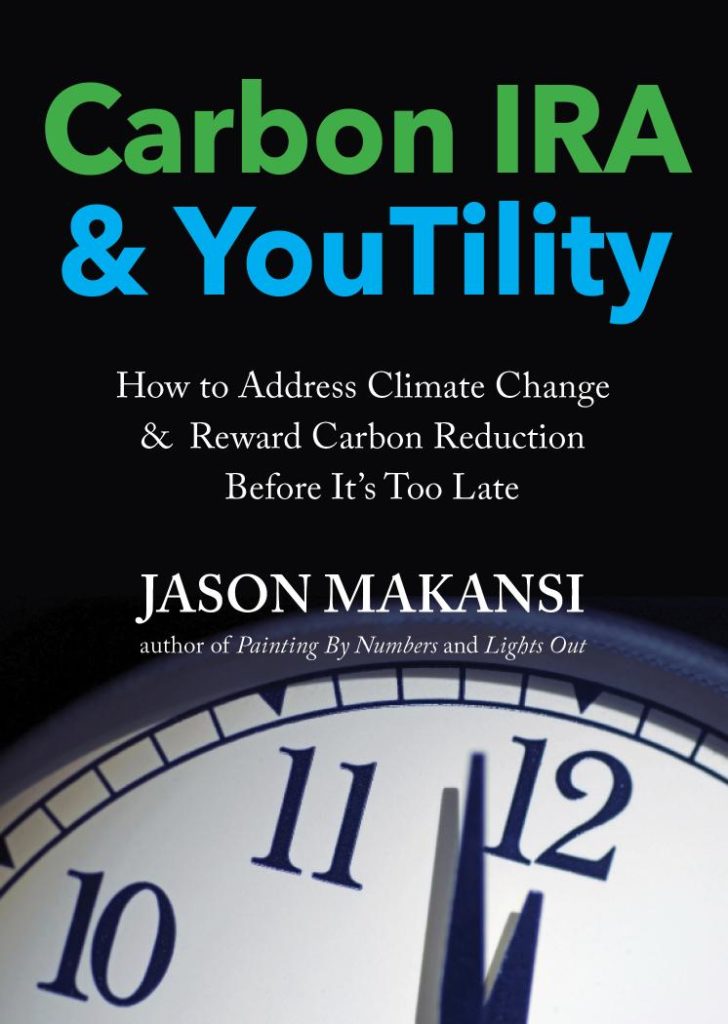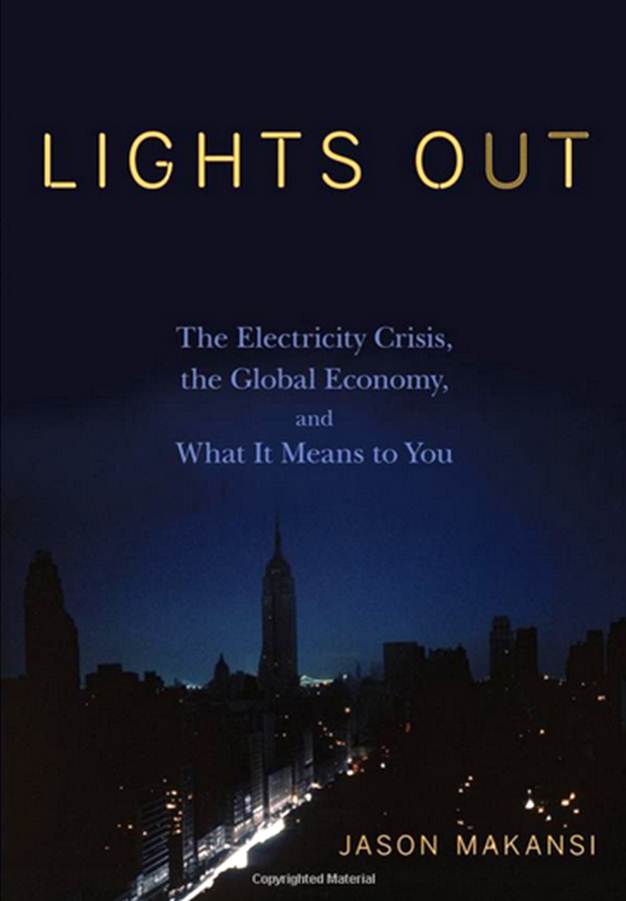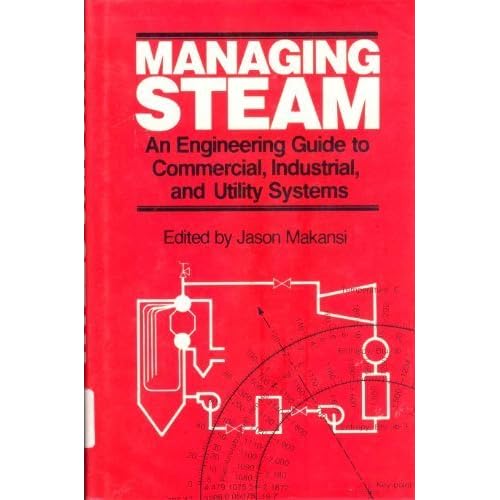Electricity & Climate Change
With four decades of experience as an analyst and independent consultant in the electricity industry, my specialty has been technology deployment and business management for entrepreneurs and boutique systems and services firms (see www.pearlstreetinc.com).
My publications and activities include:
- Knowledge Management in the Digital Age
- Carbon IRA & YouTility: How to Address Climate Change & Reward Carbon Reduction Before It’s Too Late
- Lights Out: The Electricity Crisis, The Global Economy, and What It Means To You
- An Investors Guide to the Electricity Economy
- Managing Steam: An Engineering Guide to Commercial, Industrial, and Utility Systems (out of print)
- Co-founder and Director of Research, Pearl Street Capital LLC 2007-2011
- Co-founder and Partner, Pearl Street Liquidity Advisors LLC
- Founder, Pearl Street
- Hundreds of journal articles and presentations to industry groups over forty-year period
Recent invited presentations and speaking engagements for Carbon IRA:
- International Conference on Complex Systems 2020
- Osher Lifelong learning Institute 2020 (Tucson)
- Behavior, Energy, and Climate Change Conference 2019 (Sacramento)
- Distributed Energy Conference 2018 (Denver)
- United States Energy Association 2017 (Washington DC)
- TenWest Innovation Festival 2017 (Tucson)
- Arkansas Electric Cooperative Association 2017 (Benton)
Today, it is clear that half of the climate disruption challenge we face can be met by rewarding individuals for (1) reducing their carbon footprint by converting the avoided carbon into funds deposited into a retirement account or other long-term financial obligation and (2) returning to the traditional regulated rate of return public utility investment model to transform electricity infrastructure.
Most recent publication:
- Carbon IRA & YouTility
 How to Address Climate Change & Reward Carbon Reduction Before It’s Too Late
How to Address Climate Change & Reward Carbon Reduction Before It’s Too Late
Layla Dog Press, 9780998425924, 162pp.
Publication Date: October 15, 2019 | List Price: 14.00
What experts say:
“The Carbon IRA is a potentially disruptive concept and one that should be considered among the many tools we need to move our energy system away from fossil fuels.”
— Peter Griffith, PhD, Carbon Cycle Scientist
“Collectively, we haven’t saved enough for retirement or met the urgency of avoiding the worst of climate change. Unbelievably, Jason Makansi tells us how we can do both.”
—Mark Glaess, retired Executive Director Minnesota Rural Electric Association
“In a masterful display of clear thinking expressed in clear writing Jason Makansi lays out a plan to help avoid the impending global catastrophe of climate change. His plan is both an inspiring vision and yet utterly practical. He inextricably weaves together the roles of the biggest companies with our own equally critical individual contributions. Sometimes the way forward can be obscured by the complexity of the surrounding situation. But by moving deftly from one accessible point to another Makansi proves himself a capable guide through the dangerous socio-economic mess that we have somehow embedded ourselves. The next step is implementation and I am signing up!”
—David Stone, PhD, Environmental Scientist and Green Tech Inventor
Description
According to the 2018 Intergovernmental Panel on Climate Change (IPCC), adverse human impacts on global climate are worsening. Under present conditions, we have twelve years before the planet changes irreparably, potentially harming tens of millions of people.
Nominally, 55-60 percent of the carbon build-up from humans comes from electricity and transportation. The ideas presented in this book represent a quick-start way forward. If we organize the electricity industry around two core principles—the Carbon IRA and the YouTility—we may yet be able to stave off disaster.
The Carbon IRA is a way to motivate electricity consumers to use less and get engaged with solutions for individuals. The YouTility is a way to accelerate the infrastructure transformation on the production and delivery side.
To implement the Carbon IRA framework, we need to lobby employers, local utilities, or local governments to start a Carbon IRA savings plan using a price for carbon based on the threat value of carbon to climate disruption. Then it’s a simple four step process:
ONE: Reduce your carbon footprint.
TWO: Track and report avoided carbon to your participating IRA savings plan administrator.
THREE: Your participating plan administrator will convert carbon avoided to $$ and deposit the money into your account.
FOUR: Repeat and watch your savings grow.

Other books related to the electricity/energy sector:
Lights Out: The Electricity Crisis, the Global Economy and What It Means to You
Published in 2007, Lights Out is a behind-the-scenes exposure why our electricity system is headed for a state of emergency and what can be done to head it off.
The publisher’s description: Most people don’t realize that skyrocketing global energy demand and economic growth severely affect the supply of electricity. Between production (power plants) and delivery is an antiquated, “third-world” transmission grid that is in desperate need of hardening against breakdowns, terrorist attacks, inadequate carrying capacity, and operational obsolescence. And while electricity doesn’t hold the headlines or dramatic power of oil, the ability to ensure its uninterrupted supply at a reasonable price is even more essential to global survival and prosperity. Lights Out is today’s most detailed, in-depth examination of this largely unreported looming energy crisis. Written by one of the world’s top electricity industry experts, this powerful book covers numerous hot button economic and political issues-free markets versus regulation; energy independence versus foreign imports; nuclear power, global warming, and other environmental issues; and much more. Beyond just uncovering and illuminating the problems, however, it proposes a comprehensive road map of technical solutions and regulatory reform from both the production and demand sides of the equation-a framework for rethinking, rebuilding, and enhancing the entire electricity production and delivery infrastructure. Prescriptive and provocative, Lights Out will redefine the simmering debate on how the world can-and must-act now to head off a global catastrophe, one that could eventually wreak even more havoc than the ongoing oil crisis.
———————————————-
An Investor’s Guide to the Electricity Economy
Published in 2002, An Investor’s Guide provided an inside look at the sector that went far beyond the usual investing hype.The publisher’s description: 2001 was perhaps the most tumultuous year in the modern history of the energy industry. As with telecommunications, computer and information technology, and Internet/e-commerce businesses over the last two decades, it is now a truly delicate but potentially lucrative time to invest in electricity. Deregulation means that investors face a breathtaking array of new companies and technologies that have the potential to grow and accumulate wealth. With a focus on understanding market dynamics and “technology capital,” Jason Makansi shows you how to get beyond analyst hype, uncover new opportunities, and invest wisely in An Investor’s Guide to the Electricity Economy.Divided into three sections-“The Industry,” “The Investor,” and “Case Studies”-this book introduces readers to the most current and relevant industry trends, critical insights and research based on the author’s tested methodology, and the companies and technologies that are transforming the industry. The author’s “Technology Matrix” assesses the potential of new companies based on technology development cycles, market-entry timing, commercialization progress, and strategic alliances. Understanding the new energy wholesale and retail experience, in which business and consumers will have a variety of providers and service plans to choose from, is emphasized throughout.
———————————————-
Managing Steam: An Engineering Guide to Commercial, Industrial, and Utility Systems
Published in 1986, this was my first book and is, now, woefully out of date. But it was a wonderful experience and definitely made me want to keep writing.




